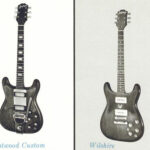Creating a guitar sound that truly stands out in a mix is an art form. It’s about capturing the instrument’s essence, its unique sonic “face,” and projecting it with clarity and impact. This guide delves into professional recording techniques that will help you sculpt a powerful and expressive guitar tone, ensuring it commands attention in any track.
To begin crafting your ideal guitar face, start by capturing the raw character of your guitar.
The foundation of any great guitar recording lies in capturing the core tone authentically. Employing a high-quality guitar amp is paramount. Experiment with different tones – clean, distorted, dirty – to provide a versatile palette. Record multiple takes, each with a distinct tonal flavor. Panning these tracks significantly, around 80% left and 80% right, creates a wide and immersive stereo image. The placement of each tone within the stereo field is subjective; let your creative ear guide you to find the most impactful arrangement.
Next, meticulous microphone placement is crucial for accurately translating your amp’s sonic character.
Select microphones that faithfully capture the tonal nuances you desire. Dynamic microphones are robust and excellent for capturing the punch and aggression of distorted tones, while condenser microphones excel at capturing the detail and clarity of clean tones. Experiment with microphone placement – moving the microphone closer to the speaker cone will capture more direct and bright sound, while moving it further away will capture more room ambience and a fuller tone.
Complement your amped tracks with a direct input (DI) guitar signal, processed through an amp simulator.
Utilize amp simulator plugins like Native Instruments Guitar Rig or IK Multimedia AmpliTube. These tools offer a vast array of virtual amps, cabinets, and effects, providing immense tonal flexibility. The DI track serves a different purpose than the amped tracks; it can add clarity, articulation, and a different textural layer to the overall guitar sound, contributing to a more complex and interesting “face”.
Judicious EQ is essential for carving out sonic space and refining your guitar’s frequency profile.
Start by rolling off the low frequencies below 150Hz and the high frequencies above 5.5kHz. This initial filtering removes unnecessary rumble and harshness, focusing the guitar’s energy in the mid-range where it often shines. These are starting points; fine-tune these frequencies based on the specific needs of your mix and the desired character of your guitar tone. Consider the overall frequency spectrum of your mix and EQ the guitar to complement other instruments, ensuring it sits cohesively without clashing.
Compression is your ally in controlling dynamics and adding sustain and punch to your guitar.
A 3:1 compression ratio with around 3dB of gain reduction is a solid starting point. Adjust the attack and release times to suit the material. Faster attack times will clamp down on transients, while slower attack times will allow the initial attack of the notes to pass through. Experiment to find the sweet spot that enhances the guitar’s presence without squashing its dynamics.
Counterintuitively, expansion can add an unexpected dimension.
Try a multiband expander, focusing on the 1-5kHz range with a ratio of approximately 0.6:1. While seemingly paradoxical after compression, expansion in this frequency range can subtly enhance clarity and perceived loudness, adding a unique dynamic character that differs from simply reducing compression.
Stereo imaging further widens the guitar’s perceived space, creating an expansive soundstage.
Adding a stereo imager can further widen the guitar tracks. Be mindful that excessive widening can introduce phase issues.
To add final polish and thickness, consider a multiband exciter.
Ideally, your core recording and initial processing stages should be robust enough that excitation is unnecessary. However, if your guitar sound needs extra thickness or harmonic richness, a multiband exciter can subtly introduce higher frequencies. Use it sparingly and judiciously to avoid harshness.
To manage potential phase issues introduced by stereo widening and other processing, utilize a phase meter plugin like Izotope Ozone’s. Reference mixes from commercially successful recordings to gauge acceptable phase correlation levels. Aim for a similar phase coherence in your mix to ensure a wide yet solid and impactful guitar sound. Remember, a wider sound isn’t always better; sometimes, a more focused and in-phase guitar can be more powerful in the context of the entire mix.
By meticulously applying these techniques, you can sculpt a guitar tone that is not just present but possesses a distinct and compelling “face” – a sonic signature that elevates your music. Experimentation is key; these steps provide a framework, but the true artistry lies in adapting them to your unique creative vision and the specific needs of each song.

